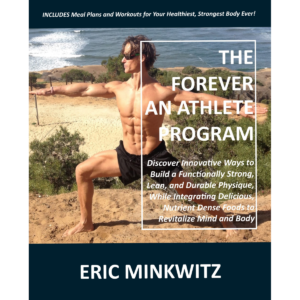Categorizing (and then eating) “Superfoods”
What exactly is a “superfood”? For those involved in agricultural technology or the biotech industry, the term “superfood” may conjure up images of massive rows of tomatoes and corn that have been bioengineered to be resistant to herbivores, to have longer shelf lives, or to grow in dry climates. Among the natural health, holistic wellness, and organic food communities, superfoods may be synonymous with ripe, colorful, and organic produce and legumes. For the bodybuilder, elite athlete, or weekend warrior, superfoods take on yet another slightly different meaning.
My definition of a superfood for an athlete is any whole, unprocessed food with a dense nutrient and antioxidant profile that confers wide ranging health benefits, helps fuel workouts, and enhances recovery. Pratt and Matthews were the first to promote these benefits in their “SuperFoods Rx” book, (Harper Collins, 2004). The authors describe how these health benefits come from the food’s mostly “live and bioactive cellular components”, and they may play a strong role in fighting disease, have a positive impact on the cardiovascular or muscular-skeletal systems, help eliminate free radicals from the body, or a combination of these processes.
As a sports performance trainer, I consider the unique nutritional needs of the athlete, and help the client determine where superfoods can fit. I also separate superfoods into three distinct categories: antioxidants, builders, and sustainers. Most superfoods have abundant macro- and micro-nutrient profiles, and can cross into other categories. Try to add 2 of the three superfoods from each group everyday, and you will be amazed at the results.
A. Antioxidants
- Green Tea (2 cups of hot tea per day)
- Blueberries (and other dark berries) (1-2 cups per day, on cereal, in smoothies, as dried snacks)
- Spinach (and other green leafies) (2-3 cups per day, steamed, or fresh in salads)
B. Builders
- Whole Eggs (2-3 egg whites everyday, yolks every other day)
- Cold Water Fish (Salmon, Tuna, Mackerel) (3 – 5 servings a week, grilled, poached, or with light mayo)
- Walnuts (2 handfuls each day as a snack)
C. Sustainers
- Brown Rice (1-2 cups per day)
- Oats (1 cup for breakfast)
- Legumes (red kidney beans, lentils, etc.) (1 cup per day, in salads, soups)
These foods address the specialized needs of athletes: an increased needs for antioxidants; amino acids for muscles and connective tissue; and slow release carbohydrates for sustained energy and glucose levels. Eating a variety of superfoods throughout the day will impart greater benefits for the athlete due to the food’s supplementary (and often unknown) synergistic effects.
Portions of this piece were produced by Eric Minkwitz and published on realjock.com in 2006.




Excellent blog! I genuinely love how it is easy on my eyes and the facts are well written. I am wondering how I could be notified whenever a new post has been made. I have subscribed to your rss feed which need to do the trick! Have a nice day!
Good blog! I really love how it’s easy on my eyes as well as the details are well written. I am wondering how I can be notified whenever a new post has been made. I have subscribed to your rss feed which really should do the trick! Have a nice day!
It really is incredible how quite a few men and women do not understand this. Thank you for this incredibly informative write-up, and I appear forward to seeing much more inside the close to long term!
This is a good blog. Keep up all the work. I too love blogging and expressing my opinions. Thanks 🙂
hmm… green tea will give you power.. its like whole wheat bread compared to the analogy of coffee.. green tea is just the best legal stimulant booster 🙂
I have been looking through these webpages and thought this site was interesting!…